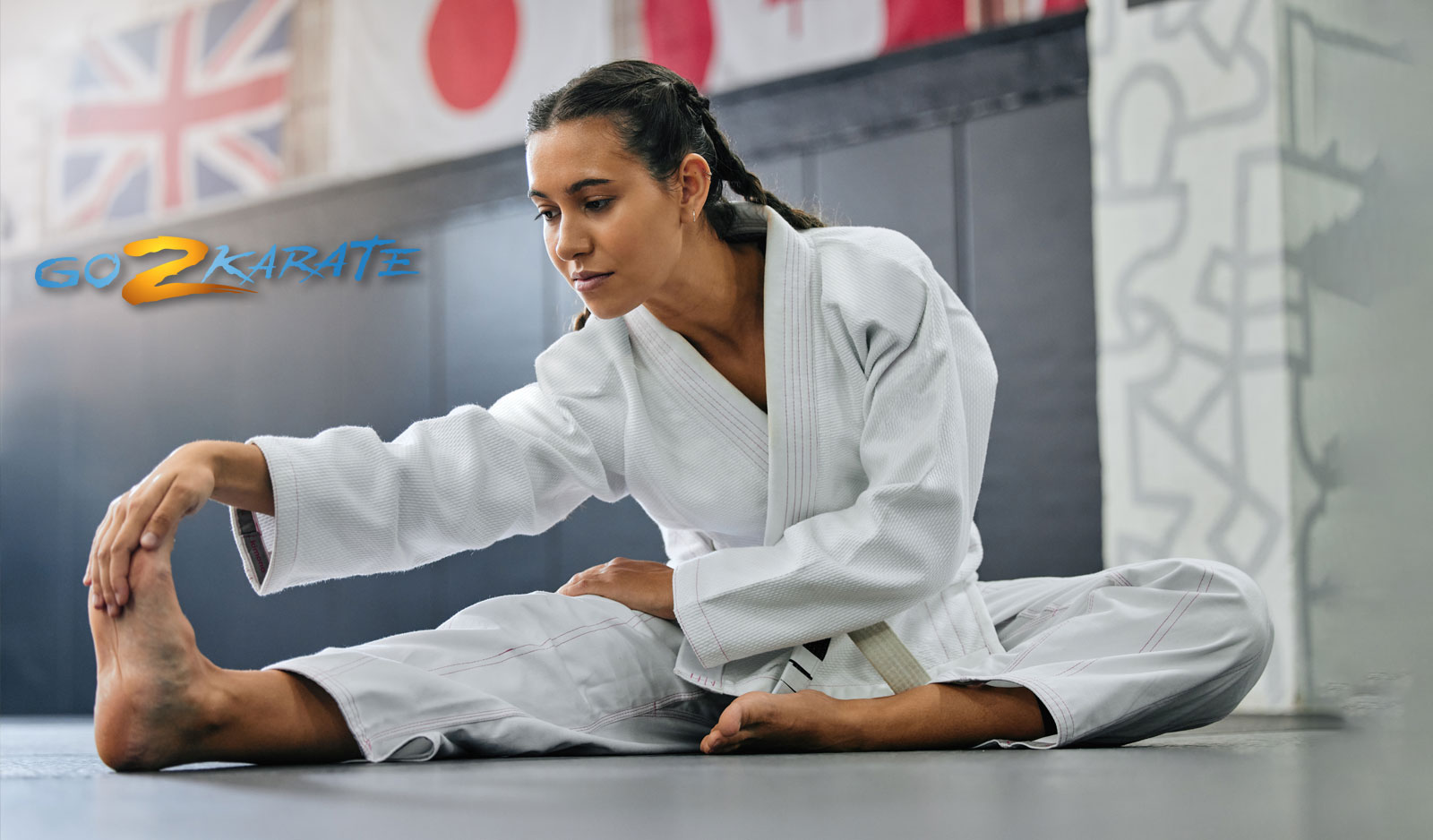How Martial Arts Can Help You Stay Limber and Agile.
Originally Published on Go2Karate.com. Your Source for Martial Arts Expertise
Flexibility and mobility are essential components of a healthy, active lifestyle. As adults age, maintaining flexibility and mobility becomes increasingly important for preventing injuries, improving overall physical function, and ensuring a high quality of life. Martial arts offers a comprehensive approach to enhancing both flexibility and mobility through dynamic movements, stretches, and conditioning exercises. Unlike static stretching routines, martial arts involves fluid motions that improve range of motion, agility, and coordination.
Many people associate martial arts with strength, speed, and self-defense, but flexibility is also a key focus in training. Martial artists need flexibility to perform high kicks, deep stances, and various other techniques that require the body to move through its full range of motion. By regularly engaging in these movements, practitioners naturally improve their flexibility over time.
One of the primary ways martial arts promotes flexibility is through its warm-up routines. Before each class, students typically engage in dynamic stretches and exercises designed to prepare the body for the intense physical activity ahead. These warm-ups often include leg swings, arm circles, hip rotations, and other movements that help loosen the joints and muscles. This type of dynamic stretching is more effective than static stretching for increasing flexibility because it actively engages the muscles and joints in a controlled manner, which enhances mobility and prevents injury.
Martial arts also incorporates flexibility into the techniques themselves. For example, high kicks in many martial arts styles require significant flexibility in the hips, hamstrings, and lower back. Practitioners must work on these areas consistently to improve their kicking range and precision. Over time, this focus on flexibility leads to noticeable improvements, not only in martial arts performance but also in everyday activities such as bending, reaching, and lifting.
Another benefit of martial arts training is its emphasis on mobility. Mobility refers to the ability to move the body freely and easily through different positions, and it is essential for maintaining balance, coordination, and overall movement efficiency. Martial arts techniques, such as footwork drills and forms, require practitioners to move fluidly from one position to another, which helps improve mobility in the joints and muscles.
For example, footwork drills in martial arts emphasize quick, controlled movements that engage the ankles, knees, hips, and lower back. These drills improve mobility by teaching the body how to move efficiently and effectively through different ranges of motion. Additionally, forms or katas in martial arts involve a series of movements that flow together, requiring smooth transitions between stances and techniques. Practicing these forms regularly helps improve mobility by challenging the body to move with greater coordination and control.
Beyond the physical aspects of flexibility and mobility, martial arts also promotes mental flexibility. Mental flexibility refers to the ability to adapt to changing circumstances and think creatively when faced with challenges. In martial arts, practitioners must constantly adjust their strategies and techniques based on their opponent’s movements, which requires quick thinking and adaptability. This mental flexibility carries over into other areas of life, helping adults become more resilient and adaptable in the face of everyday challenges.
Incorporating martial arts into a fitness routine is an excellent way for adults to improve their overall flexibility and mobility, regardless of their current fitness level. Unlike other forms of exercise that may focus solely on strength or endurance, martial arts provides a balanced approach that improves flexibility, mobility, and coordination simultaneously. This well-rounded approach makes martial arts an ideal choice for adults looking to maintain or improve their physical function as they age.
Moreover, the flexibility gained through martial arts training has long-term benefits for injury prevention. As adults age, the risk of injury from falls or sudden movements increases. Maintaining flexibility and mobility helps reduce this risk by ensuring that the muscles and joints can move through their full range of motion without strain. This flexibility also allows the body to absorb impact more effectively, reducing the likelihood of sprains, strains, and other injuries.
A final thought, martial arts is an excellent way for adults to improve their flexibility and mobility while also gaining strength, coordination, and mental agility. The dynamic movements and stretches incorporated into martial arts training help practitioners stay limber and agile, which is essential for maintaining physical health and preventing injuries. Whether you’re new to martial arts or have been practicing for years, the benefits of improved flexibility and mobility are undeniable.
Remember: staying limber and agile is key to a long, healthy, and active life, and martial arts can help you achieve that.

Source: The Go2 Karate Library – Where Martial Arts Enthusiasts and Professionals Find Expert Guidance.
